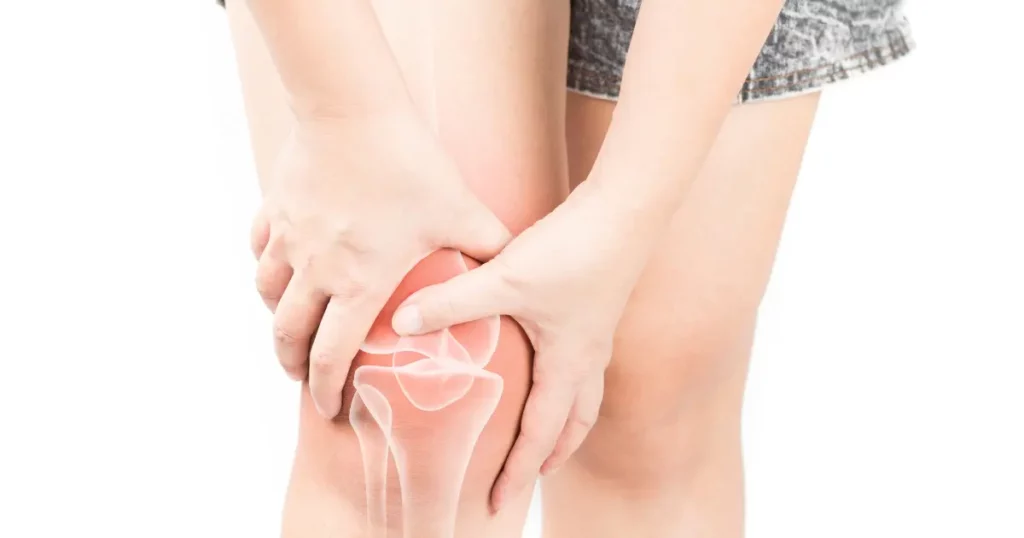Level Up Your Nutrition Game With Our Freebies
Alex
I provide nutrition coaching for endurance athletes to improve performance and body composition through a simple and flexible eating style.
Hi, I'm
ATHLETE EATING GUIDE →
LEARN MORE →
ATHLETE GROCERY SHOPPING GUIDE →
10-DAY PROTEIN-PACKED SAMPLE MEAL PLAN
READY TO FUEL?
incredible value!
The fueling guide bundle serves as your one-stop-shop for strategies to fueling before, during and after your workouts.

Relative Energy Deficiency in Sport or RED-S can negatively affect the sports performance and overall health of both male and female endurance athletes.
RED-S is a condition that athletes can get as a result of underfueling and overexercising. You may have heard it called the Female Athlete Triad, but the name was recently changed to be inclusive of both men and women. This dangerous condition can have lasting harmful effects on an athlete’s health and performance. Keep reading to learn more about RED-S and a sports dietitian’s advice on how to prevent it.
What is Relative Energy Deficiency in Sport (RED-S)?
As we mentioned above, Relative Energy Deficiency in Sport (RED-S) is a condition that athletes can get from consistently taking in less energy than they are exerting. It can happen to any athlete, at any stage in your training.
Your body burns energy from doing a variety of daily tasks. When you exercise, you increase the amount of energy that your body is exerting. Then your energy gets replenished when you eat food in the form of calories. Since athletes are exercising consistently, their energy needs increase, and therefore their caloric needs increase as well.
However, if you aren’t eating enough food, your body runs low on energy to pull from. You can start to experience serious consequences over time, such as developing RED-S.
Relative Energy Deficiency in Sport vs Female Athlete Triad

If you aren’t familiar with the term RED-S, you may have heard it formerly called the Female Athlete Triad. The name was recently changed to apply to both male and female athletes since anyone can develop the condition.
An energy deficiency in athletes was originally coined over 25 years ago as the Female Athlete Triad and was characterized by three related components: disordered eating, menstrual dysfunction, and low bone mass. It was a condition commonly seen among female athletes who exercised excessively while restricting their food intake. Over time of consistent restriction, they would develop amenorrhea or the loss of their period.
However, with more research, clinicians decided the term Female Athlete Triad needed to be broader. The disorder is a more extensive issue than just those three components mentioned. Having a low amount of energy available can start to impact the entire body and cause complications, regardless of an athlete’s gender.
What causes RED-S?
RED-S can be caused by one or a combination of two things: not eating enough and/or exercising too much. When there is an imbalance in your dietary intake vs. energy expenditure, you can start to experience impaired bodily functions. Next, your body will begin adjusting your body systems to compensate for the lack of energy. This can have metabolic, hormonal, and functional effects.
Disordered eating, such as extreme weight loss methods and restrictive diets, is one of the main causes of RED-S. It is actually one of the three criteria originally used to diagnose the Female Athlete Triad.
Many endurance athletes feel the need to restrict their calorie intake or lose weight in order to be the best athlete they can be. But this can actually do more harm than good. Your body needs fuel to be successful!
Examples of disordered eating habits that can contribute to energy deficiency:
- Abnormal eating behaviors
- Distorted body image
- Weight fluctuations
- Intentional calorie restrictions
- Frequent fad dieting
If left untreated, disordered eating can develop into a clinical eating disorder. It is very important to seek medical attention and treatment if an eating disorder is suspected.
Signs and Symptoms of RED-S

The signs and symptoms of RED-S can look different for every athlete. These symptoms can often fly under the radar and go unnoticed by athletes. Because of this, the disorder is frequently undiagnosed.
In general, here are a few signs & symptoms to look out for:
- Fatigue
- Difficulty concentrating
- Rapid weight loss
- Frequent illness/infections
- Hair loss or thinning hair
- Cold hands/feet, trouble staying warm
- Missed periods (female athletes)
- Dehydration
- Increased injuries
- Mood swings (irritability, anxiety, depression)
Consequences of RED-S on Sports Performance
It is a no-brainer that the signs and symptoms above can impact your overall quality of life, and also start to affect your sports performance. RED-S can be a significant hit to your ability to perform at your best as an athlete. The condition can be sad and frustrating to deal with.
First off, when you have low availability of energy for extended periods of time, you can begin to develop nutrient deficiencies. Nutrient deficiencies lead to a whole host of negative effects, including chronic fatigue and an increased risk of illness and infections.
Second, current research shows that athletes with low energy intakes experience a reduction in protein synthesis. Since protein synthesis is essential for maintaining and building muscle, athletes who experience a reduction can lose muscle mass and take longer to recover from training sessions.
Lastly, many of the consequences of RED-S on sports performance have to do with its impact on your bone health. RED-S alters the hormones inside your body, increasing stress hormones such as cortisol and decreasing estrogen and testosterone. This has been shown to have adverse effects on bone density and bone formation leading to potentially irreversible bone loss in athletes. A loss in bone density can increase your risk for bone fractures and other prominent injuries.

How do you treat RED-S?
The way to prevent and treat RED-S is by increasing your daily intake of food and/or decreasing your amount of training. If you find you are struggling with adding more fuel to your day, there are strategies you can use to help. Here are a few practical tips:
- Make sure your fueling strategy fits your lifestyle. Take a look at your daily schedule and compare it to your eating times. Where can you add-in an extra meal or snack?
- Increase your current portion sizes. Double up on your protein and/or carb sources.
- Meal prep food ahead of time in a way that corresponds with your training schedule. Prep food when you have the most energy (ideally not before or after a training sesh).
- Check out our full article on athlete meal prep tips!
- Add in foods with higher calories to get more bang for your buck. Fats have the most calories, with 9 calories/per gram. Toss some nut butter on your oatmeal or grab a bag of trail mix before you leave the house.
It is estimated that a good number to aim for is a 300-600 calorie/per day increase. In addition, you may find it helpful to keep a food journal for a week or two to assess where your intake as it. Then you can adjust accordingly.
Other Treatment Strategies
There are a couple of other interventions used to treat RED-S, mainly targeted at optimizing bone health. Resistance training may be beneficial alongside your distance training to help maintain bone mass. Further, an athlete’s diet should include foods high in calcium such as leafy greens, dairy products, and almonds. A calcium supplement may be needed, especially if you do not eat dairy.
Lastly, a deficiency in vitamin D may be associated with RED-S. While some foods and sunlight contain small amounts of vitamin D, a supplement may be needed to replenish levels.
The Takeaway
Overall, it is important for us to increase awareness about RED-S and the effect it can have on athletes. Research is continuing to emerge about the importance of getting the proper fuel and calories that your body needs to thrive. You may have to put in extra thought and planning to ensure you aren’t unintentionally undereating.
If you suspect that you may have RED-S, proper screening and diagnosis from your healthcare team are encouraged. Working with a sports dietitian can help you decide on the right treatment protocol to help get your energy and performance back. Don’t let underfueling take away from hitting that next PR!
My dietitian team and I have a few spots open in our premium nutrition coaching program! Head over to our services page to secure your spot today.
Alex
I provide nutrition coaching for endurance athletes to improve performance and body composition through a simple and flexible eating style.
Hi, I'm
LEARN MORE →
take the quiz!
Let's discover your Endurance Nutrition IQ
How well do you know your fueling? Answer these questions and let's see where your endurance nutrition knowledge is at!
Take the quiz
level up your nutrition game with these freebies
free downloadS
Protein-Packed 10-Day Sample Meal Plan
Athlete Eating Guide
Athlete Grocery Shopping Guide
1
2
3
Inspiration to fit 120 grams of protein into your day
Planning what goes on your plate
Putting the right foods in your grocery cart
